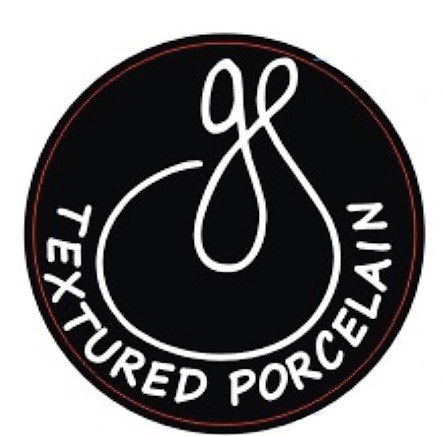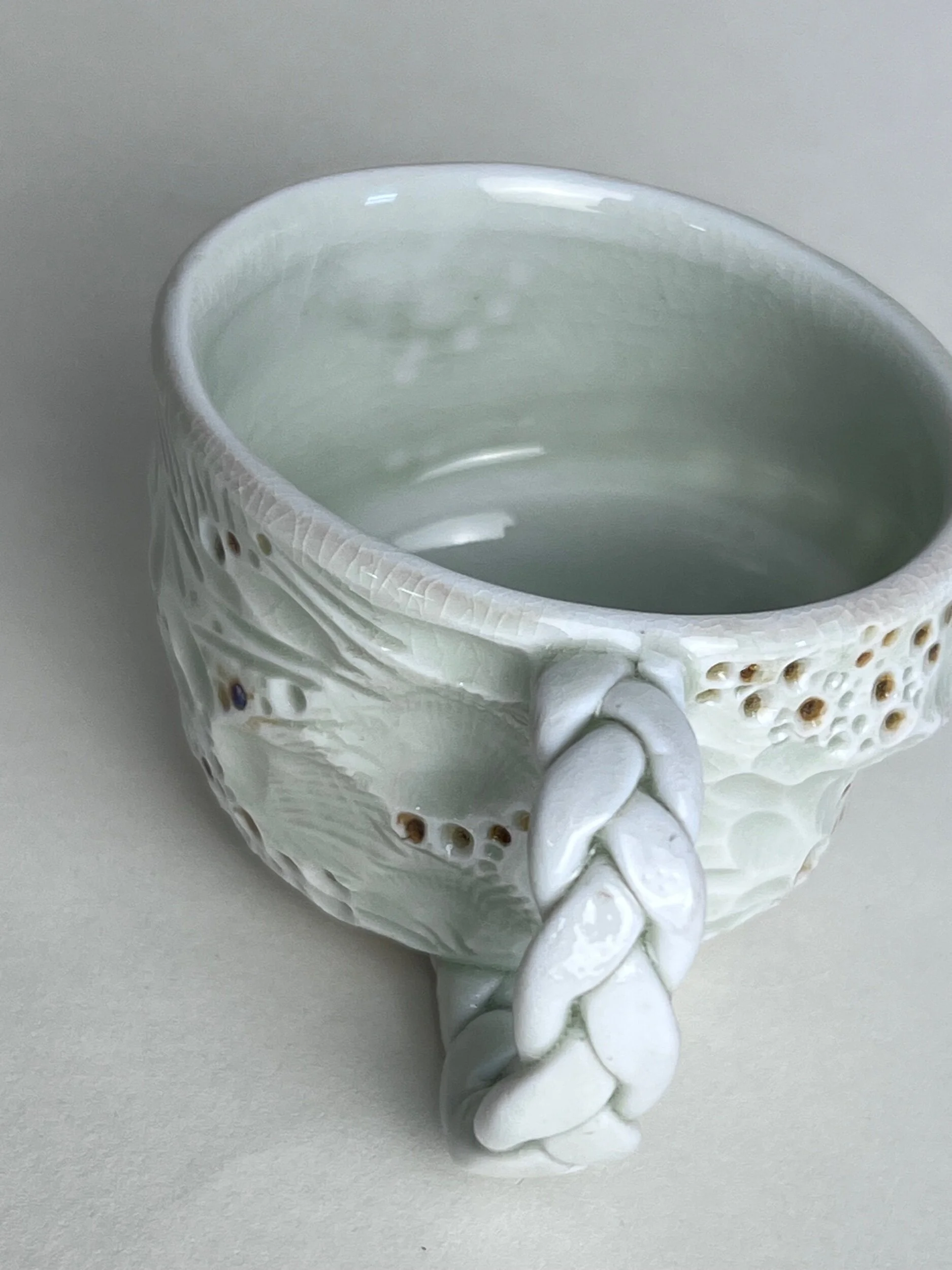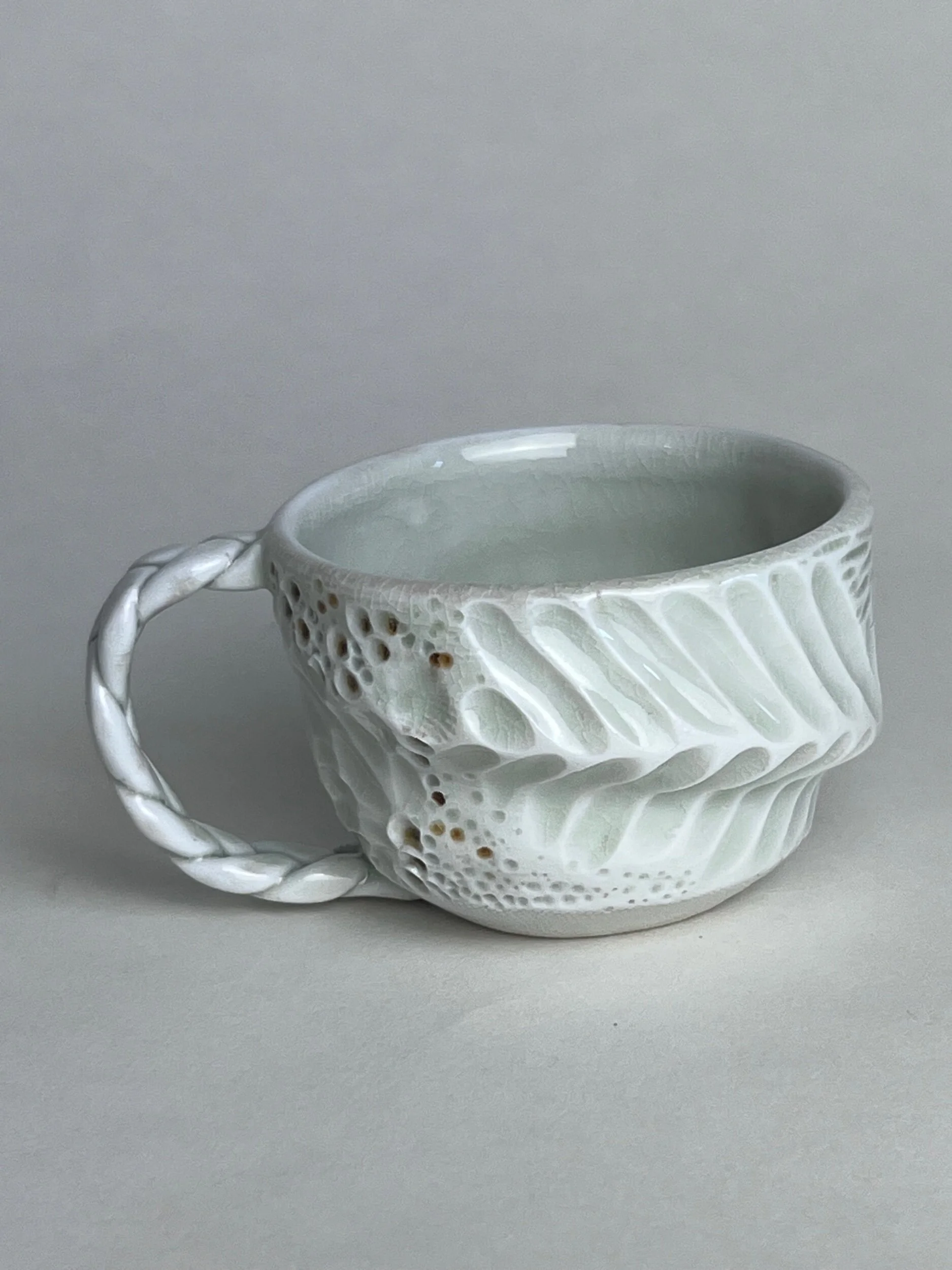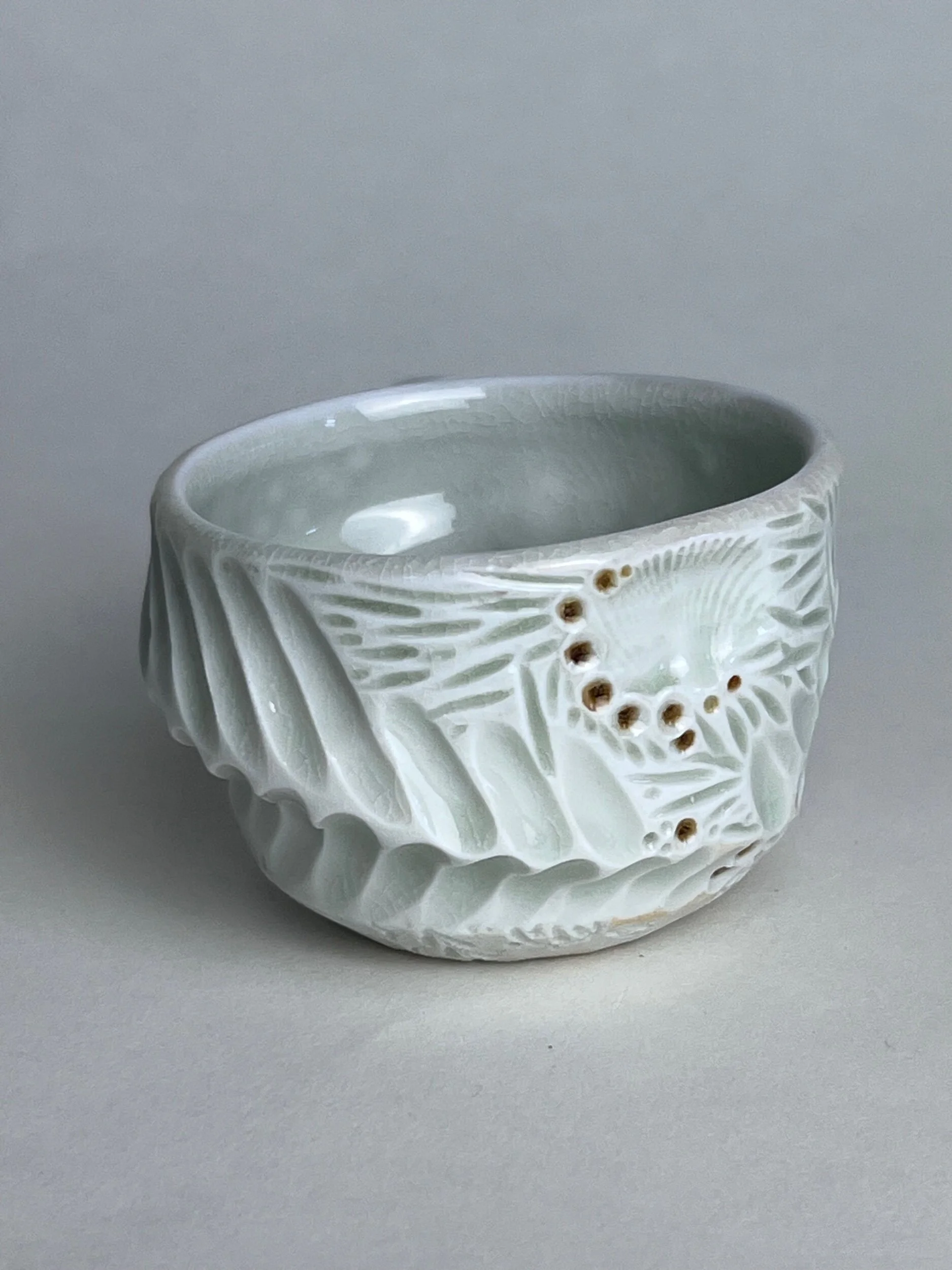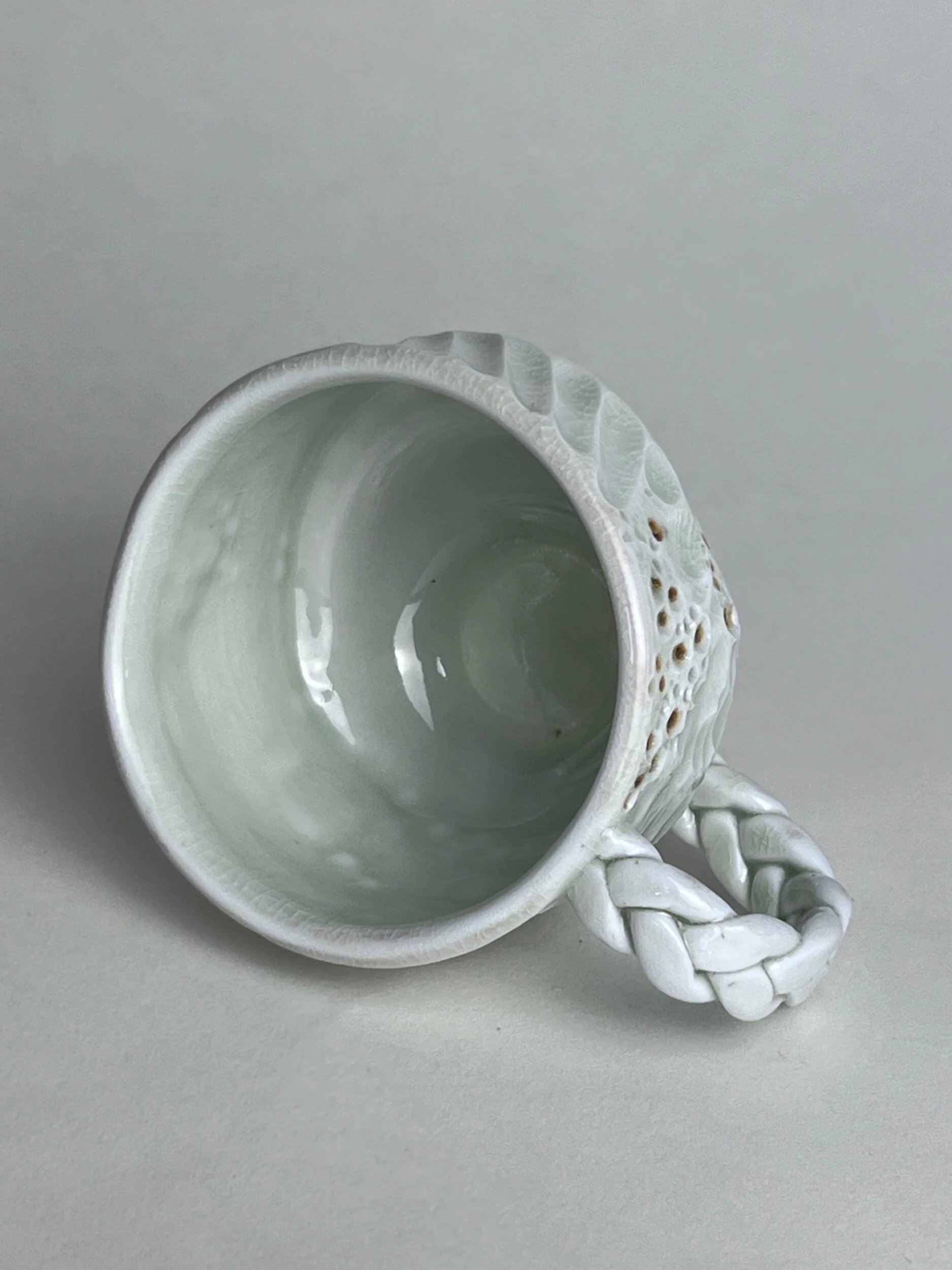Braided Espresso Cup
Braided Espresso Cup
This piece was thrown on the potter's wheel then once dry enough, carved, to create a textured surface. I used a stain or glaze inside and out to give it color. It was then fired in a soda fired gas reduction kiln.
Soda firing is a firing technique where a vapor glaze made of sodium oxide (soda) glazes the clay body of the pottery during the firing process. Baking soda (sodium bicarbonate) is introduced into the kiln, with a nozzle, at a high temperature of over approximately 2350°F. The soda then evaporates and the flame carries the vapor within the kiln, landing on textured porcelain. When the soda vapor comes in contact with the surfaces, it binds to the silica molecules to create a glaze over the surfaces.
Details:
Clay body: high fired porcelain
Size: H-2.” , W-2.5”
Food safe: yes
Dishwasher safe: yes
Microwave safe: no
